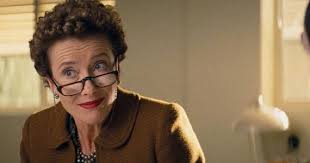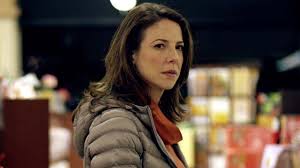 Unlike Emma Thompson in Saving Mr. Banks, Oscar Isaac plays an unlikeable character who never quite redeems himself. The Coen brothers’ latest film is shorter on the quirky outlandishness that sometimes marks their films, and longer on a kind of weary, cynical heart. Isaac plays the title character, a singer-songwriter living in Manhattan in 1961, just before Bob Dylan appeared to break open the complacent folk music scene. Davis has recently lost his performing partner, who jumped to his death off the George Washington Bridge. Although we know little more about Llewyn Davis’s history than that, he gets a fair amount of mileage from those who presume his ill-humor comes from his grief.
Unlike Emma Thompson in Saving Mr. Banks, Oscar Isaac plays an unlikeable character who never quite redeems himself. The Coen brothers’ latest film is shorter on the quirky outlandishness that sometimes marks their films, and longer on a kind of weary, cynical heart. Isaac plays the title character, a singer-songwriter living in Manhattan in 1961, just before Bob Dylan appeared to break open the complacent folk music scene. Davis has recently lost his performing partner, who jumped to his death off the George Washington Bridge. Although we know little more about Llewyn Davis’s history than that, he gets a fair amount of mileage from those who presume his ill-humor comes from his grief.
In fact, Davis is something of a shit-magnet. He spent one night with his friend Jim’s girlfriend, Jean, and she gets pregnant. (Carey Mulligan, as Jean, is rather drab in a wasted part, with an accent that makes her performance feel like something out of Christopher Guest’s folk music satire, A Mighty Wind.) Davis couch-surfs because he can’t afford to pay rent, and gets tossed out of one apartment after another. In one case, the household cat escapes before he can close the apartment door, and because he doesn’t have keys to get back in, and can’t offload the animal on anyone in the building, he’s forced to carry the photogenic tabby with him (and his guitar and his man-bag) on his perambulations around the city. People glare at him on the subway, especially when the cat escapes down the aisle. And his subsequent couch-owners aren’t delighted that he shows up with a feline companion. Davis’s mopey big eyes, floppy curly hair, and down-turned mouth are somehow softened, though, with the yellow tabby along for his ride to nowhere.

Only when he sings does Davis’s life turn around, as his rich voice and glorious guitar-playing (both of which Isaac performs himself, with soulful conviction) captivates his audiences at the famed Gaslight Cafe folk club in Greenwich Village. The predatory manager, Pappi (Max Casella), knows he’s good, but can’t quite keep Davis in rent money, as most performers at the noted venue play for whatever patrons put in the collection basket at the end of a set. When Davis makes his way to Chicago to see Bud Grossman, a famous promoter, Grossman (played with weary impatience by F. Murray Abraham) tells him frankly that his music “doesn’t sound like money.”

Davis is caught with a talent that expresses his essence but can’t support his life. And his resolutely bad luck means he can’t turn shit into gold. When Jim (a likable, earnest Justin Timberlake) invites him to be a studio musician on a session, Davis is so hard-up for cash he works as a freelancer, relinquishing his rights to future royalties. Of course, the silly but catchy ditty he helps record will go on to make his friends a lot of money.

The film and the character would be much less poignant without Isaac’s diffident, lived-in performance as Llewyn Davis. He can’t get his act together, but somehow, you can’t blame him. Isaac plays him as a vortex of loss—he’s lost his partner to a senseless, unforeseen death; his father, a former seaman, is fading away in a nursing home; his sister hates him; he loves Jean but she’s involved with Jim; and he can’t support his musical talent. Isaac’s eyes hint at depth and the despair of a man not looking for his big break, but trying to make some sense of how stalled he seems, despite what he understands as his abilities. Isaac makes Davis a man of big feeling and limited communication, especially when he’s not strumming his guitar and singing with his eyes closed.

That fateful trip to Chicago pairs Isaac with John Goodman, a Coen brothers’ mainstay, as Roland Turner, a heroin-addicted jazz musician being escorted across the country by a young would-be actor named Johnny Five (Garrett Hedlund), who mumbles to Davis that he was performing in The Brig, the Living Theatre’s infamous production, before the police closed it down. Turner hauls his considerable girth through the world on two silver-knobbed black canes, and spends the car ride haranguing Davis about folk music, sneering that it’s puerile and feminine. His taunting monologue provokes Davis to reveal something of a fighting spirit, and also demonstrates his isolation. When he isn’t yelling, Turner nods off through most of the long trip and Johnny Five smokes until his eyes are slits but won’t respond to Davis’s questions or conversational gambits. It’s a weird, surreal, claustrophobic world—in the film’s one section of more typical Coen brothers’ macabre fantasy-making—but it makes Davis look sober and ambitious by comparison.
Inside Llewyn Davis is a period piece and a mood movie, a character study and a slice of history that remembers Greenwich Village as a hotbed of artistic desire and sometimes even achievement. It’s a reminder of a time when people turned up in smoky cafés because they loved the music and the progressive impulse it represented, when artists played for pennies and rambled through the city mostly homeless in return for those privileged moments of feeling the spotlight bathe their faces and of knowing that people were listening as they sang.

The Coen brothers capture that liminal moment just before Dylan arrives in New York to turn the folk scene on its ear. He appears as both a harbinger and as something of a mirage at the very end of the film as part of the Gaslight’s backdrop, a young, green singer with a guitar in his lap and a harmonica wired to his neck.
The film beckons to memory without sentiment, and winds up being moving and compelling, especially when the filmmakers just let the performers sing. Most of the song performances are filmed complete from beginning to end, which makes Inside Llewyn Davis not quite a concert film, but certainly one that appreciates its music (curated here by the awesome T Bone Burnett) and has nothing but respect for the artists who made it.

Does it pass the Bechdel test? Not by a long shot. Mulligan and the very few other women characters in the film are as frumpy and sexless as Isaac is soulful and sexy, in his abject sort of way. But there is something vaguely feminized about Llewyn Davis’s predicament, and his hapless lack of agency as an artist. His agent, Mel (Jerry Grayson), scams him. (Sylvia Kauders is a vision as Mel’s secretary—the two are a Catskills comedy team in their brief scenes together.) Pappi, the Gaslight impresario, insists you can’t play his club unless you sleep with him (even though he means women), which throws Davis into a rage. He’s angered on Jean’s behalf, but the narrative implies that any artist is beholden to the vaguely sexual whims of the powerful male producers who decide their fates.
The film’s loopy narrative structure doesn’t quite clarify itself, which doesn’t quite matter, since the point is simply that Llewyn is caught in a life he doesn’t really want to escape. The story begins and ends with Davis being beat up in an alley outside the Gaslight by a tall dark stranger, who kicks him to the ground to defend someone else’s honor. Davis never gets a chance at payback and doesn’t even seem to want it, another powerless, feminizing character choice.
Feminist film? No. Worth seeing for its flawed hero and how the Coen brothers evoke the early 1960s New York folk scene? Definitely.
The Feminist Spectator




















